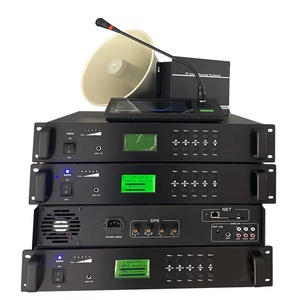Introduction to IP PA Intercom System
The IP PA intercom system is a cutting-edge communication solution designed for real-time audio interaction over IP networks. It seamlessly integrates with existing communication infrastructures, enabling organizations to broadcast announcements, manage intercom calls, and enhance security measures via a unified platform. Tailored for environments ranging from schools and hospitals to industrial sites and corporate offices, these systems provide versatile solutions to a diverse range of communication needs.
Types of IP PA Intercom Systems
Several types of IP PA intercom systems cater to different requirements, including:
- Standalone Intercoms: Basic systems ideal for small businesses or facilities.
- Integrated Systems: Complex setups that connect with video surveillance and access control.
- Wireless IP Intercoms: Flexible installations that eliminate the need for extensive cabling.
- Multi-Zone PA Systems: Designed for large facilities that require broadcasting messages to specific areas.
Applications of IP PA Intercom Systems
The applications of IP PA intercom systems are vast and impactful, serving various sectors such as:
- Educational Institutions: Facilitating announcements and emergency communications.
- Healthcare Facilities: Ensuring swift communication between doctors, nurses, and patients.
- Corporate Office Spaces: Enhancing inter-department communication and coordination.
- Manufacturing Plants: Coordinating operations and ensuring safety across large areas.
- Public Transport Hubs: Assisting in passenger announcements and emergency alerts.
Features and Advantages of IP PA Intercom Systems
IP PA intercom systems come loaded with features that deliver unmatched advantages:
- High-Quality Audio: Offers clarity in communication, minimizing misunderstandings.
- Scalability: Easily expand the system as organizational needs grow.
- Remote Access: Control and manage the system from anywhere using a smartphone or computer.
- Integration Capabilities: Works harmoniously with existing IT infrastructure and security systems.
- Cost-Effectiveness: Reduces the need for multiple communication systems, consolidating expenses and maintenance efforts.









































































































































































































